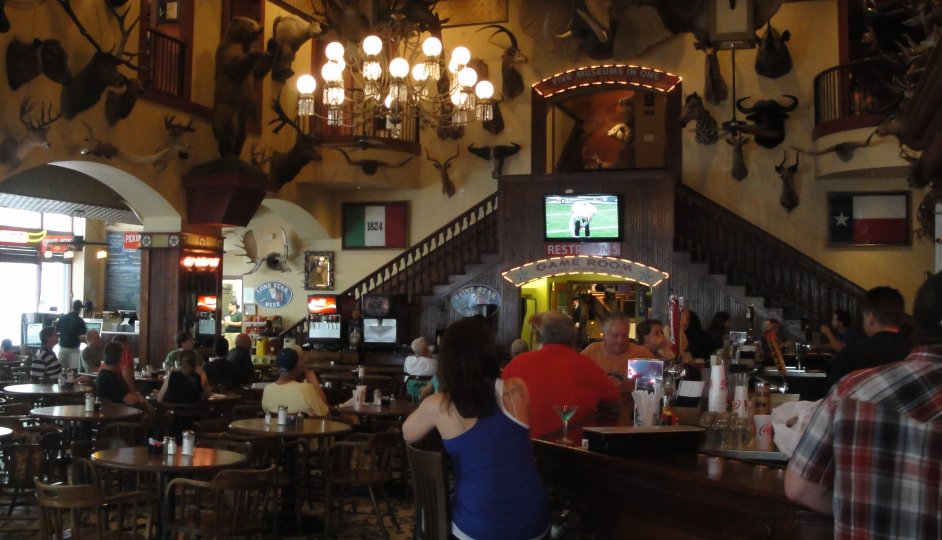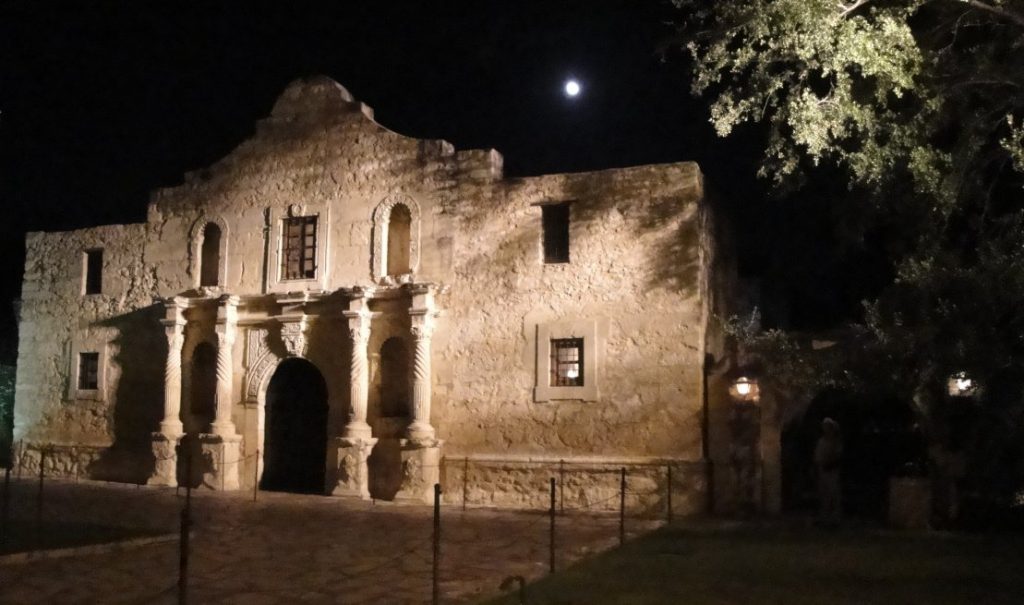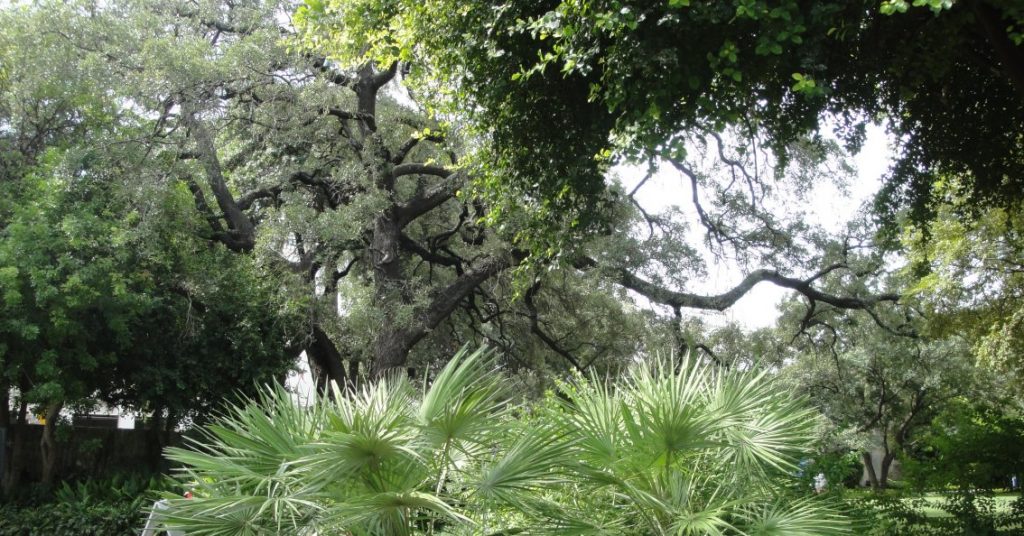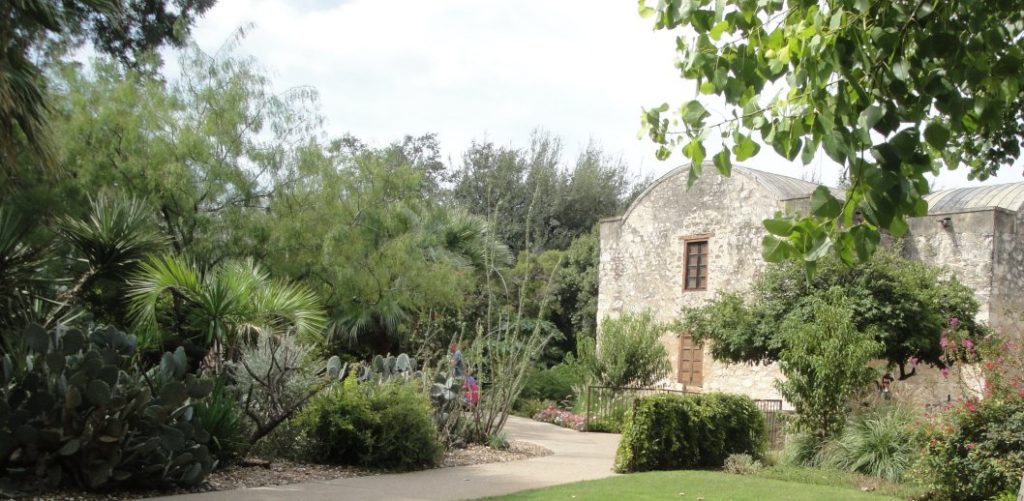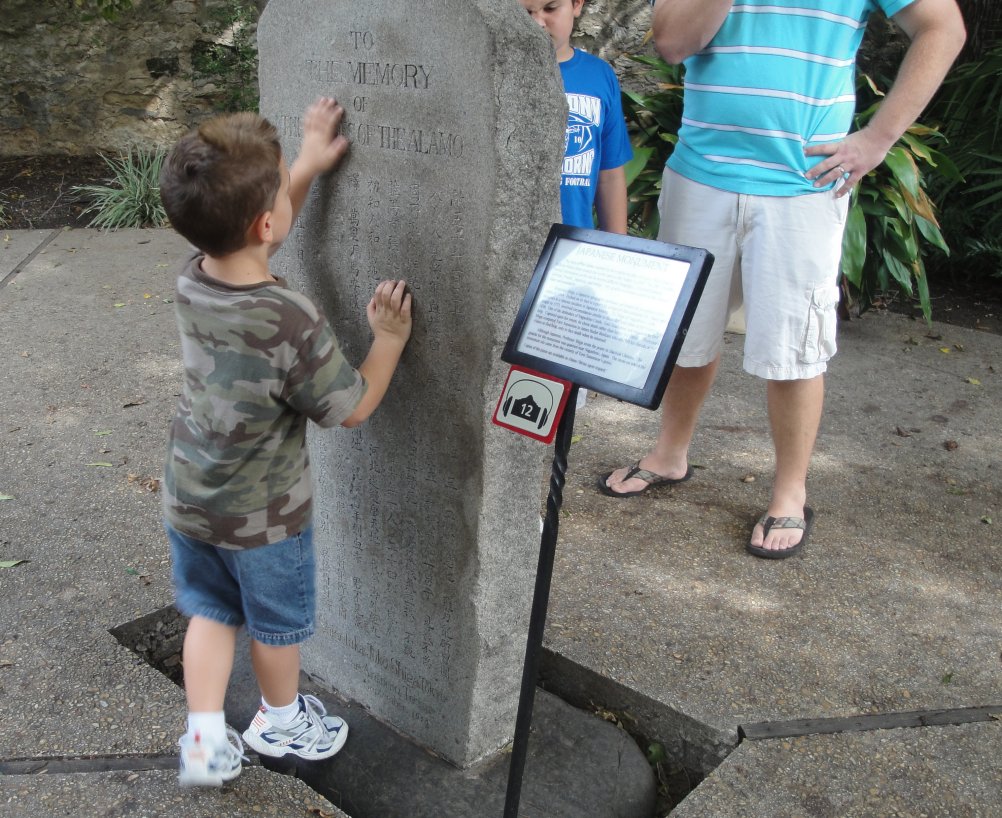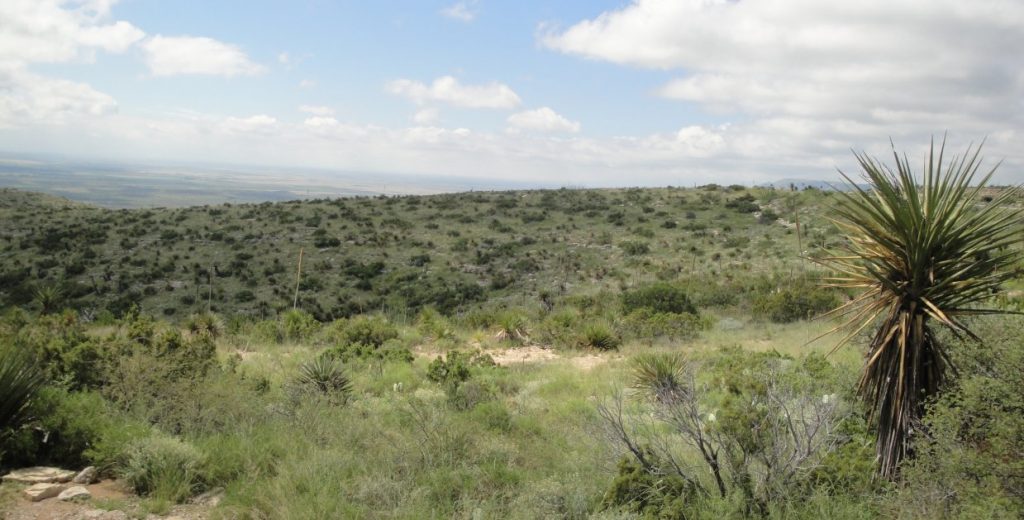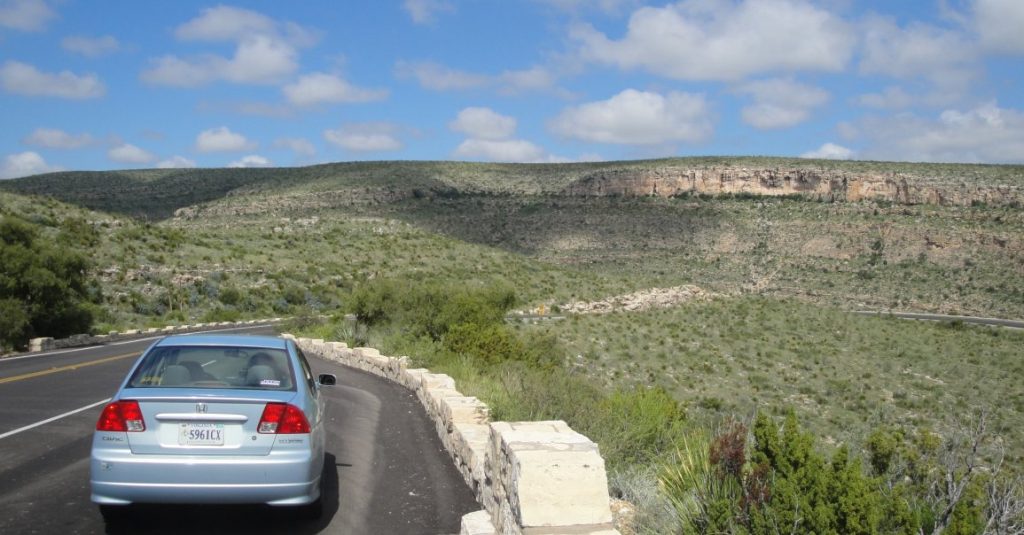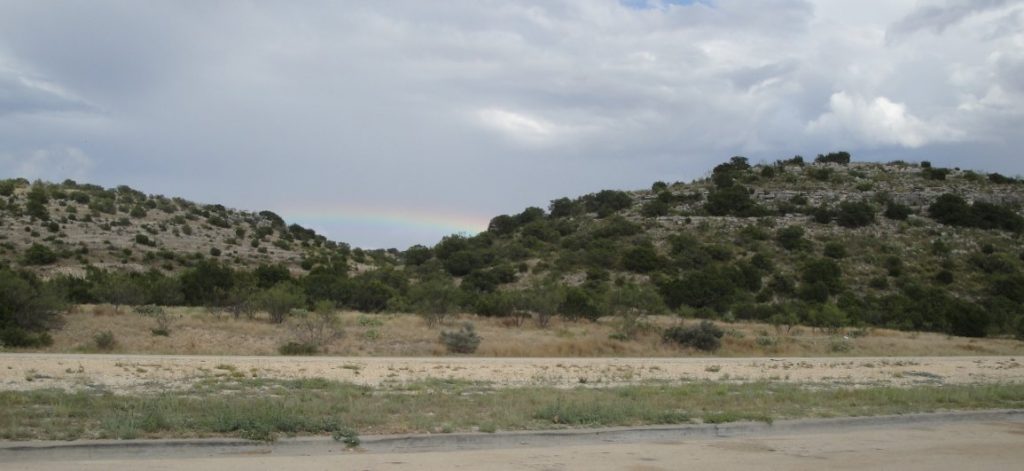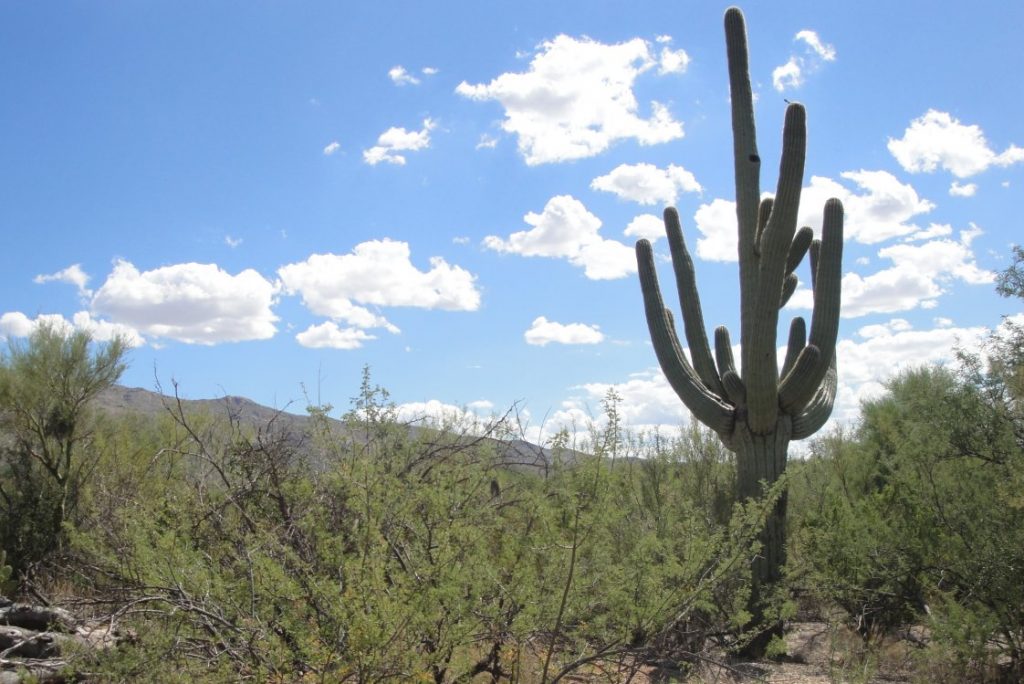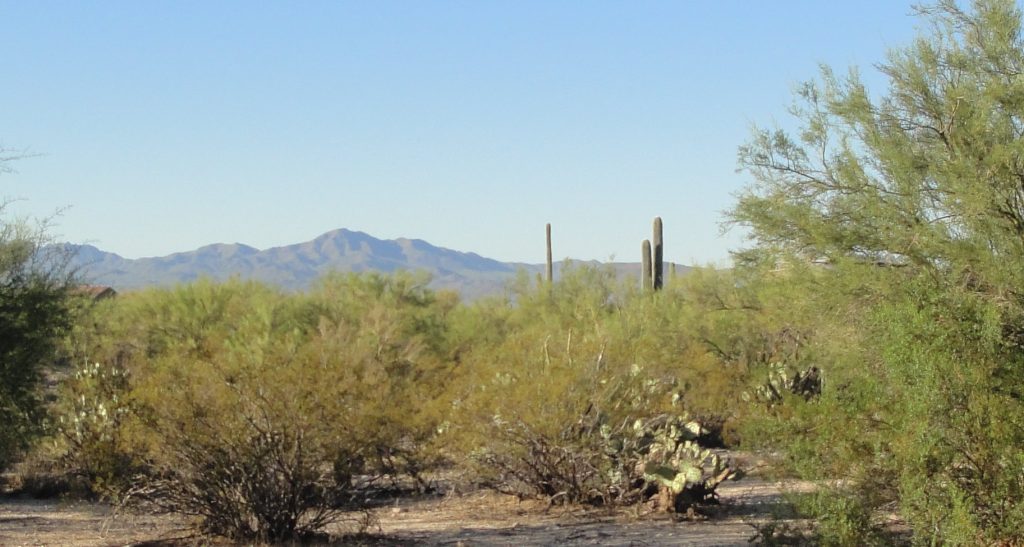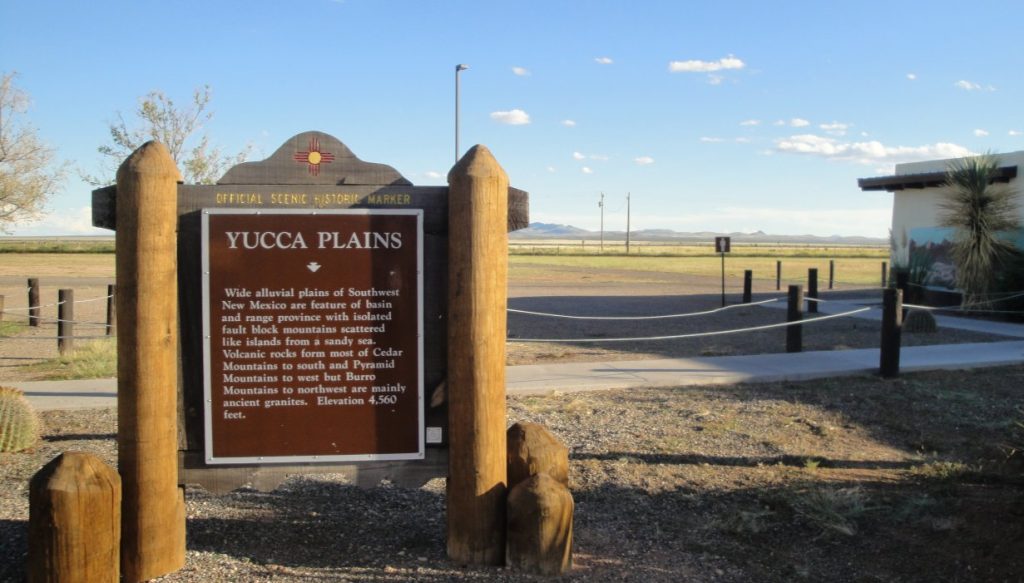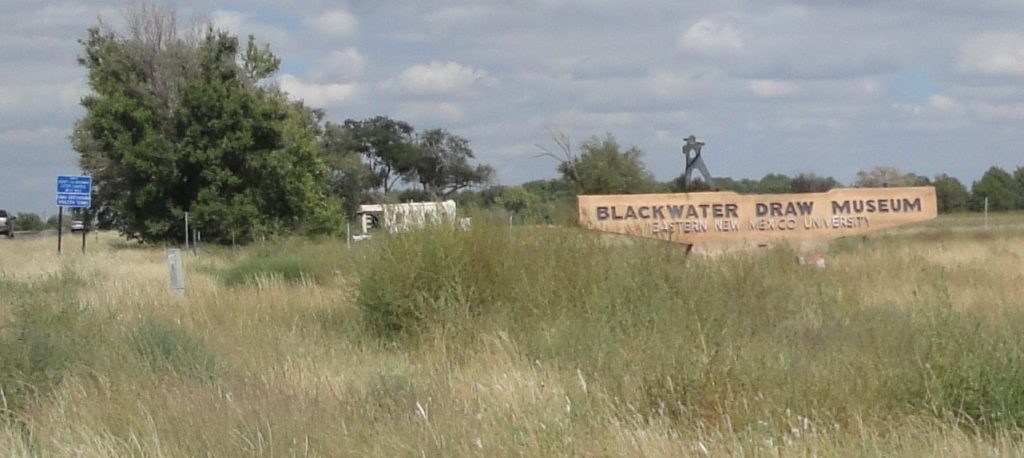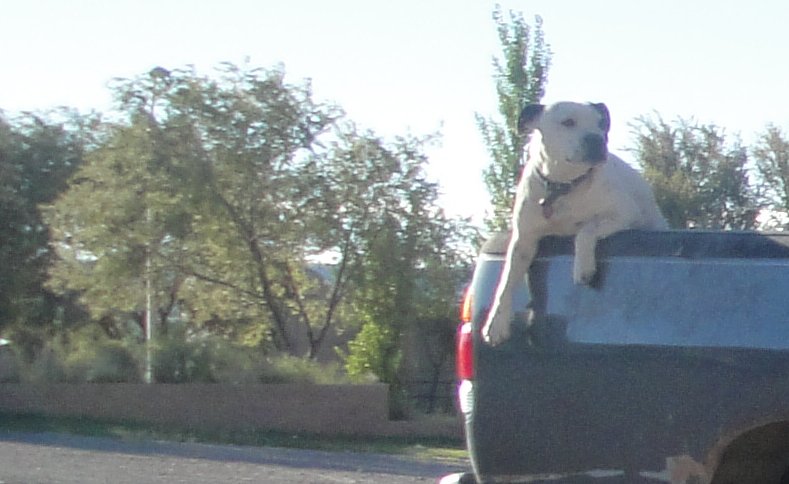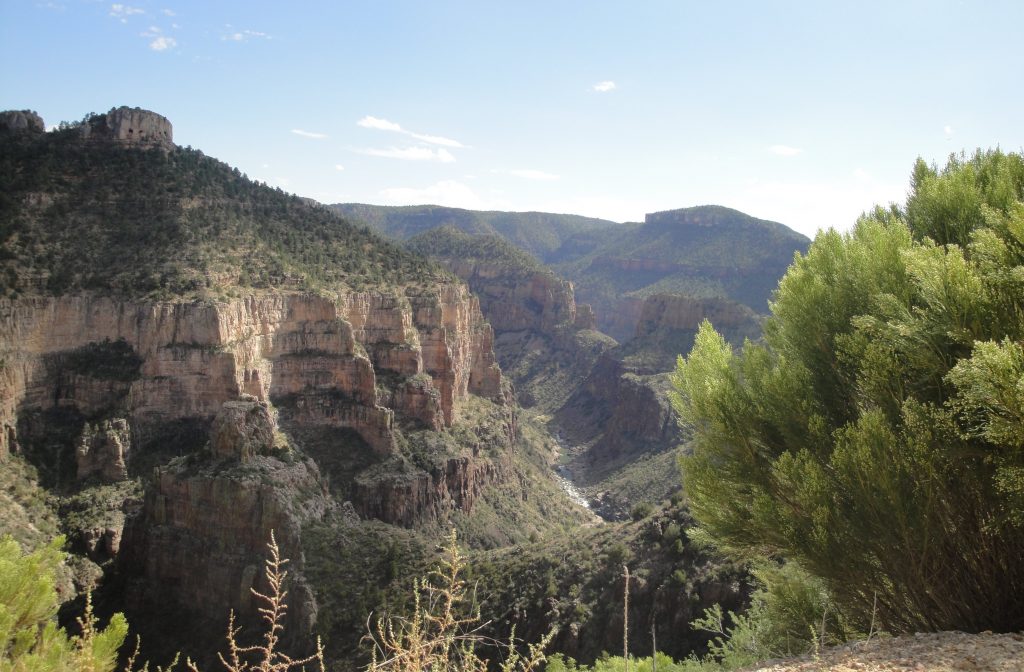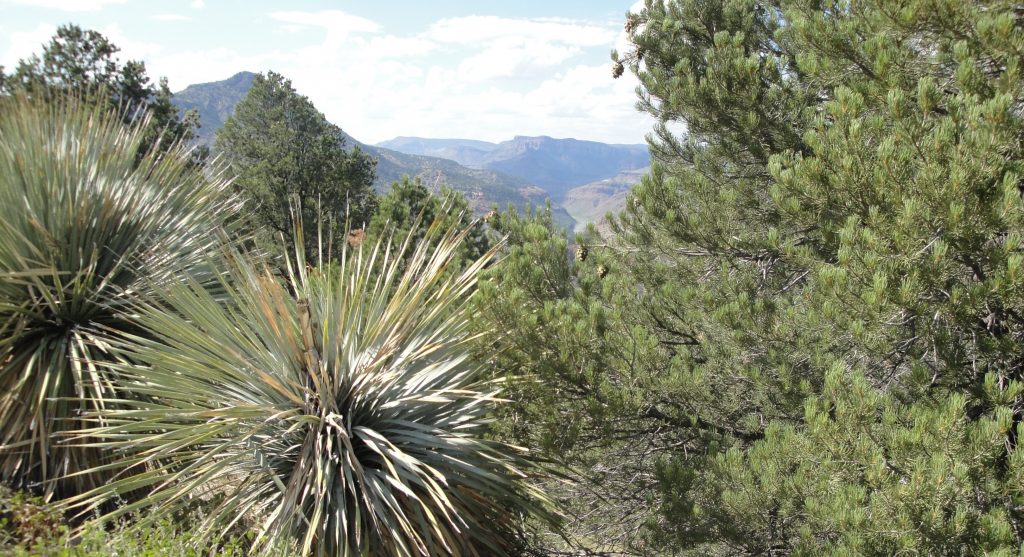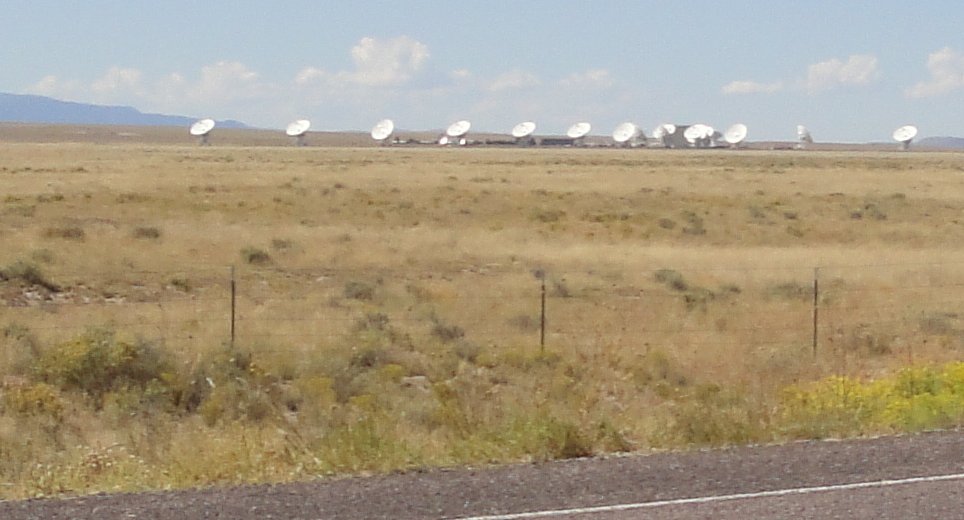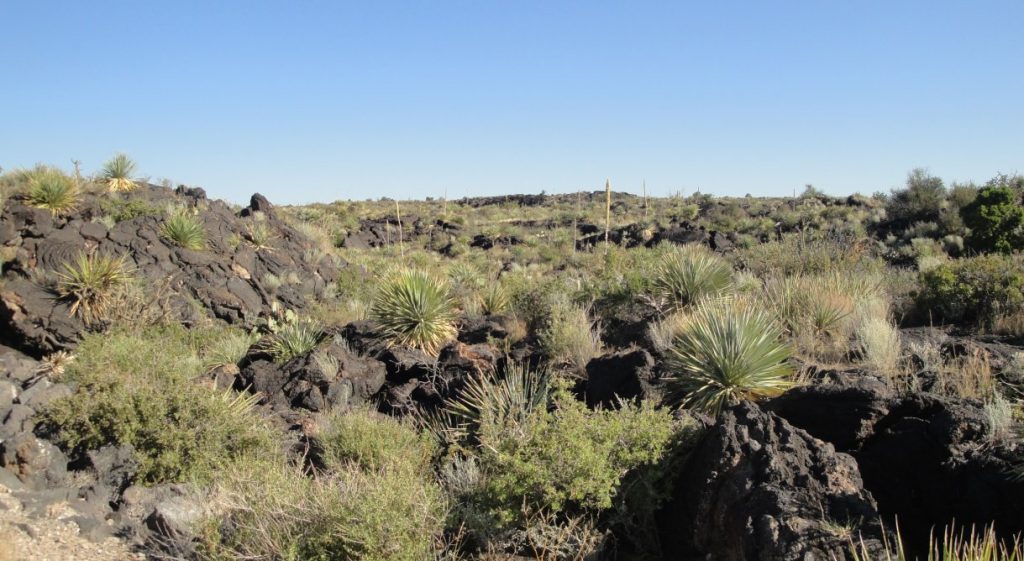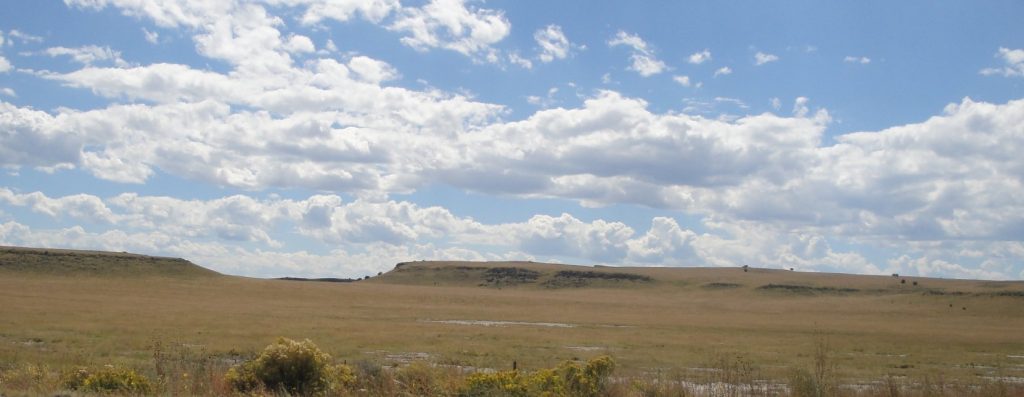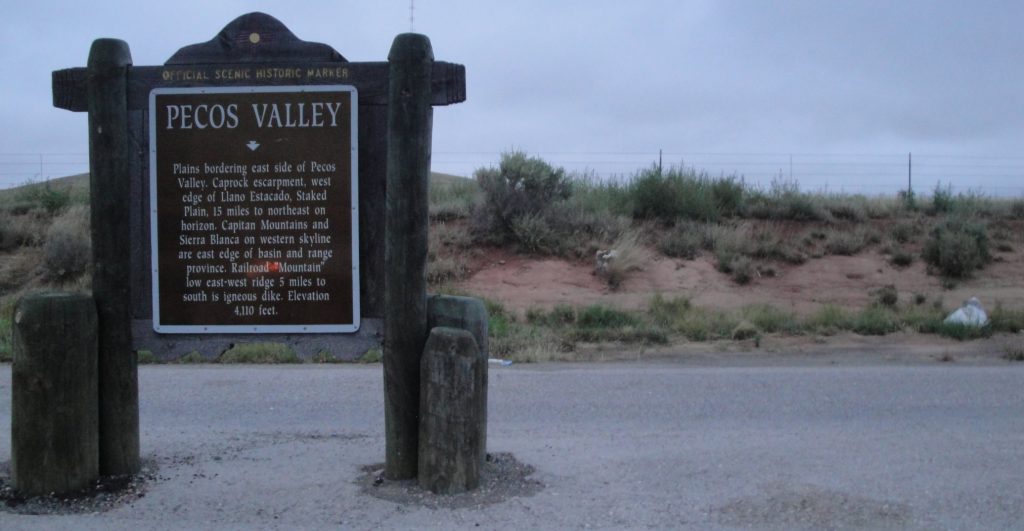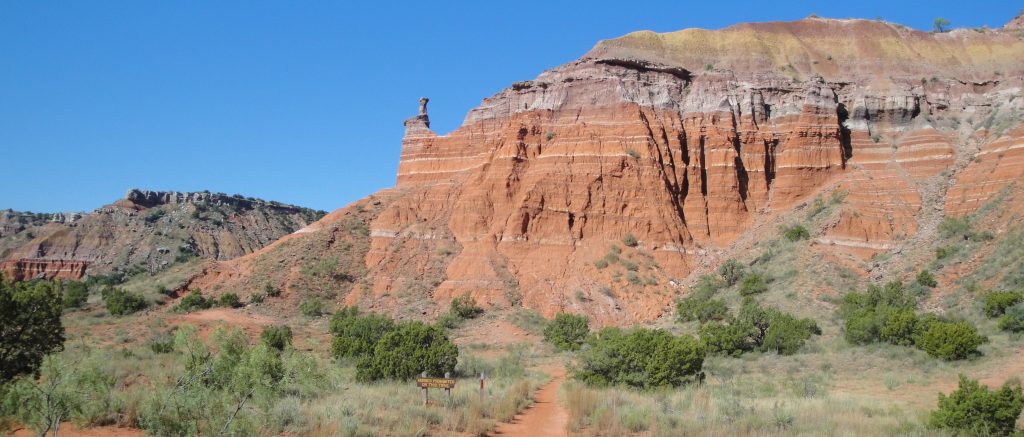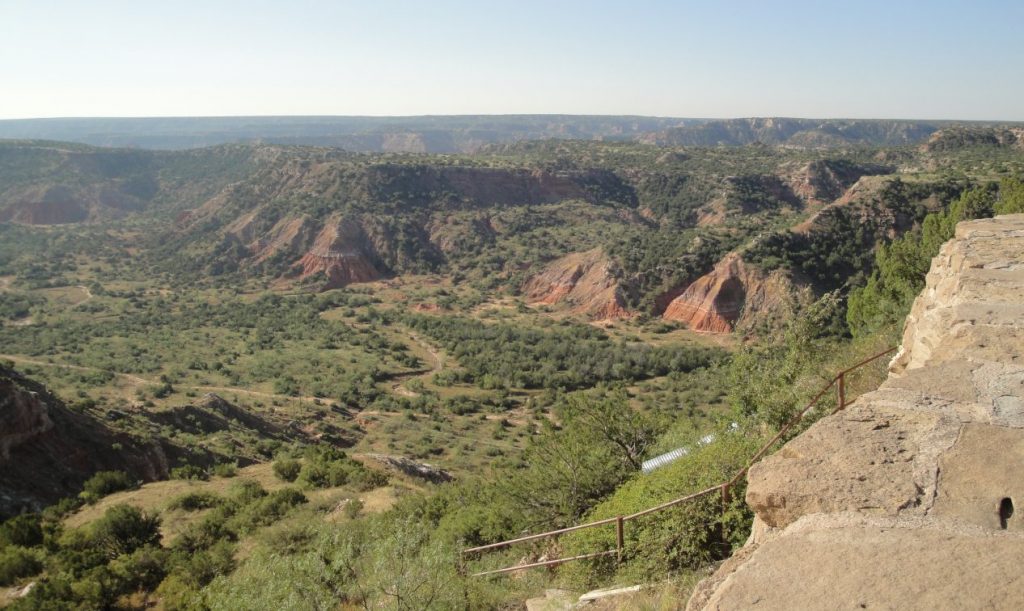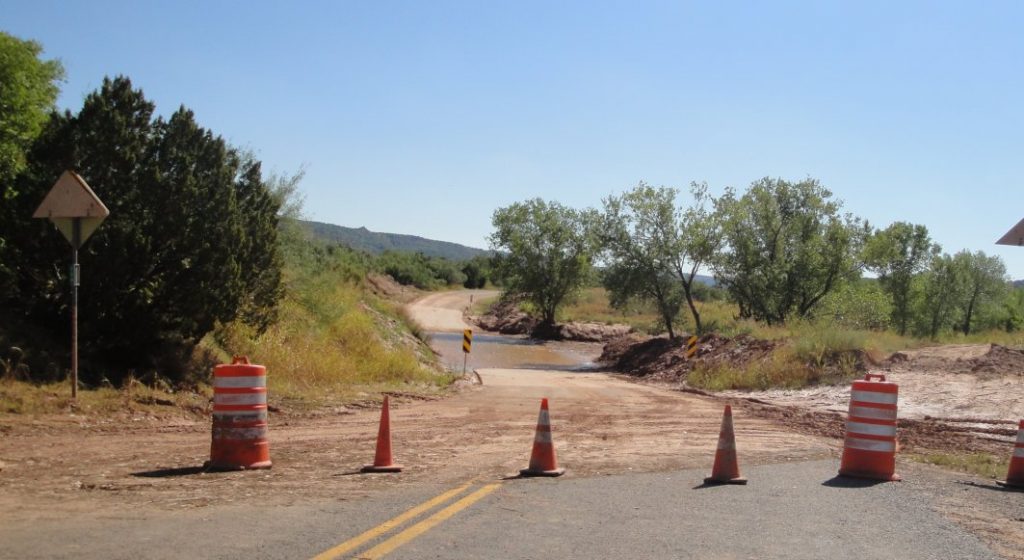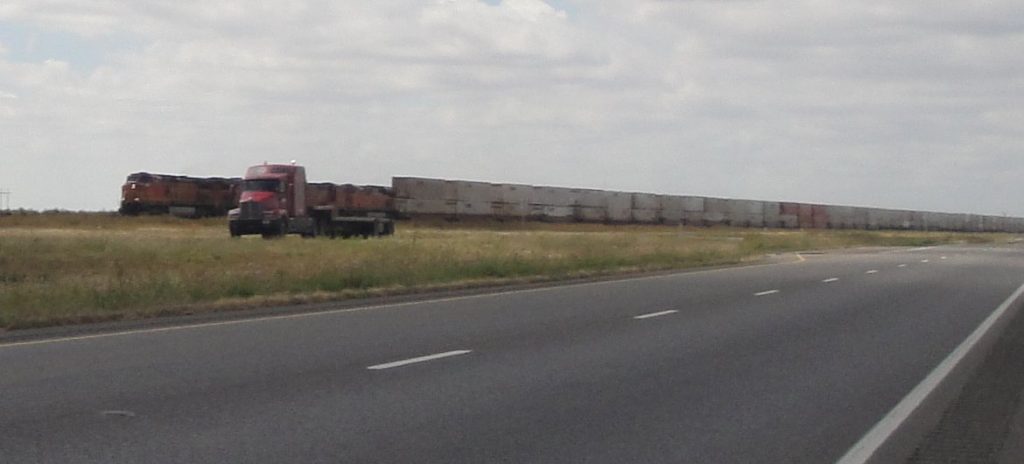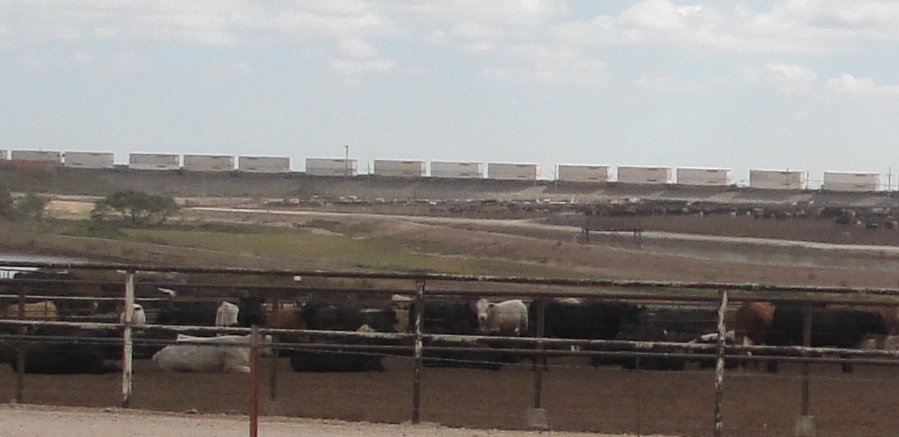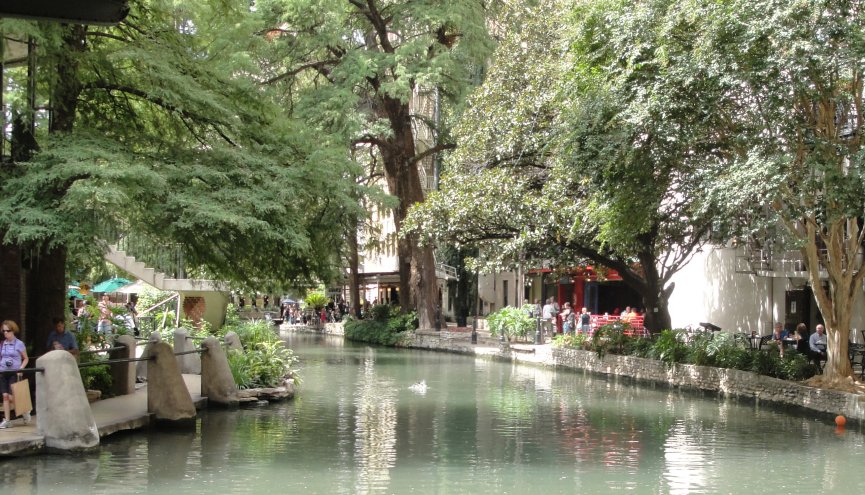
The thing I liked most about San Antonio’s Riverwalk was that it seemed very natural because of the very large trees, mostly bald cypress and Montezuma cypress, and the lush plants along the route. Chrissy & I walked along the paths and then took the boat ride. The boat ride is worth it. The city is named after the San Antonio River, not the other way around.
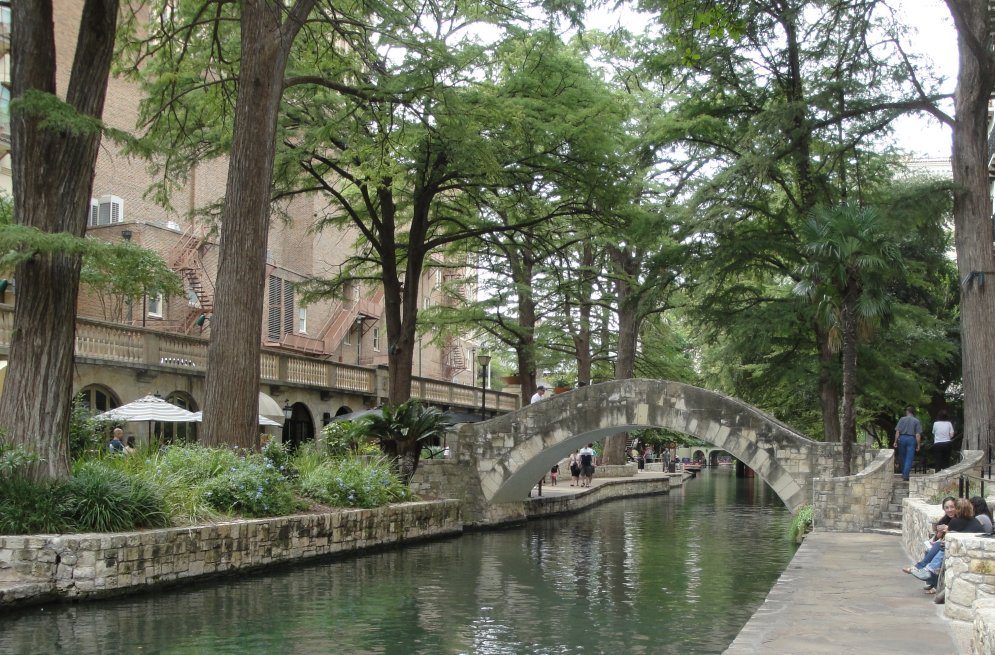
Part of the river is natural, i.e. it has a mud bottom and part is created with a concrete channel. The river was a center of city life since the founding of the city, but the River Walk has been developing in something recognizable as predecessor of today’s version since the 1940s. In order to make that possible, the river needed to be controlled. San Antonio can get heavy rains and the river used to flood. Today the big investments along the river walk are protected by a flood gate system, which shunts flood waters into holding basins and an underground channel.
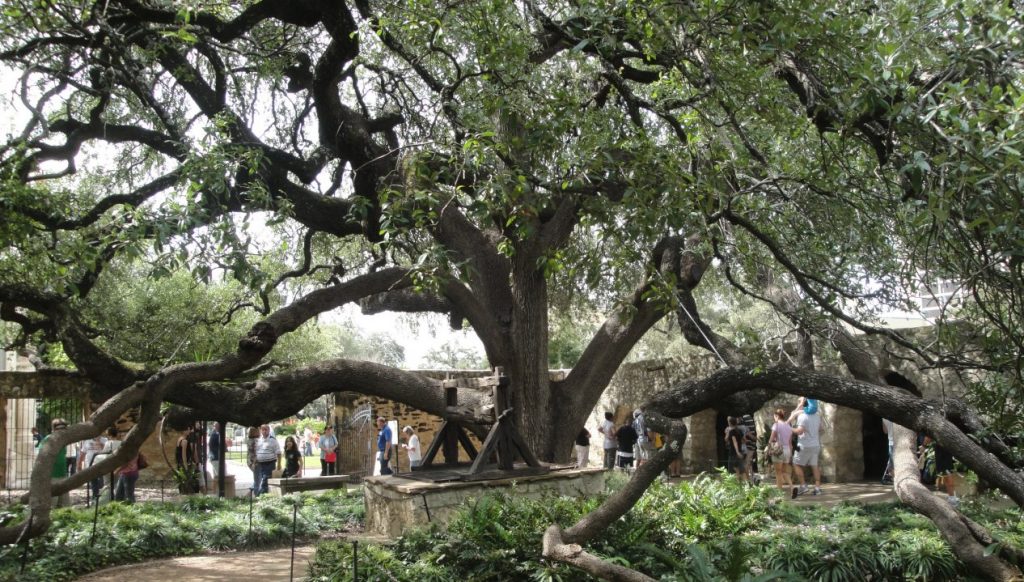
The climate and vegetation surprised me. It is more southern and Gulf shore-like than I thought. I always pictured the place as a more Western place, in the sense of drier or more of a prairie ecosystem. But there were palm trees, live oak, tropical looking rubber trees and the cypress I mentioned above all growing in enthusiastic profusion.
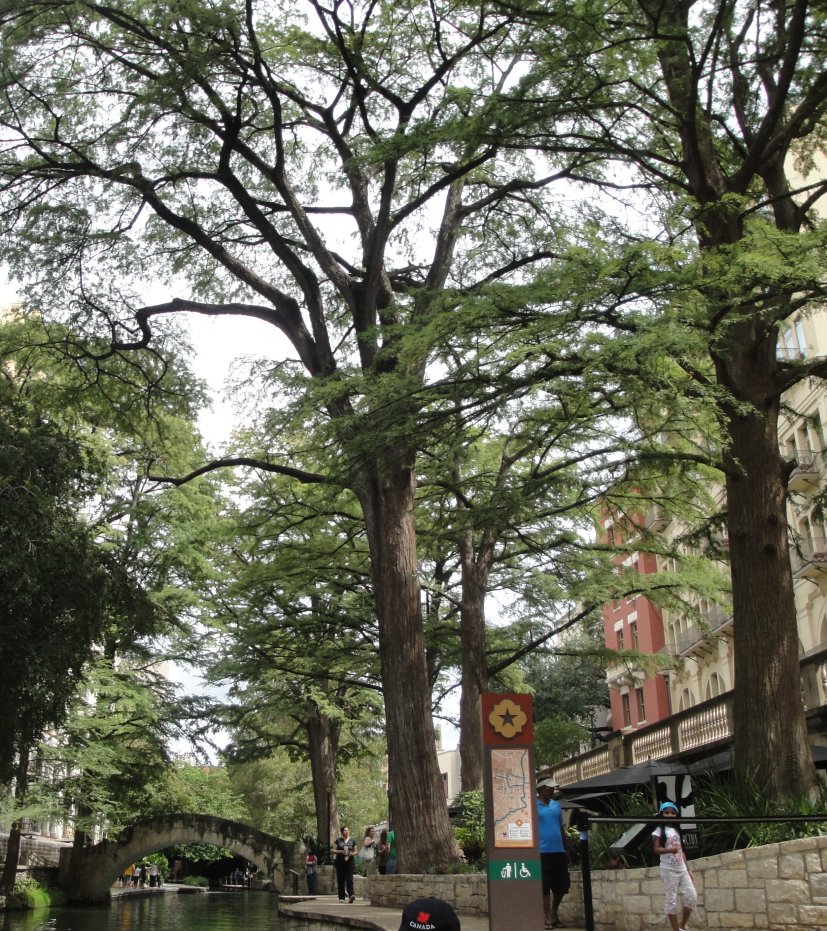
I suppose that most people are less passionate about environment & trees and more about the many nice restaurants. It is very much alive with people, probably mostly tourists. We had lunch at a place called “Dick’s” where the waiters are encouraged to be wiseasses. That gives the place a special character. The food is just okay. In the evening we had some good steaks at the Texas Land & Steak restaurant.
Another surprising aspect of San Antonio is its Middle American feel. I expected the city to be a lot more Hispanic than it is. Maybe I was just in a particular part of town, but besides the sub-tropical plants and the Alamo, this place could have been in Ohio or Illinois. In fact, what I have been noticing generally in my drive across America has been how American the country is. We talk a lot about our differences, but they pale before the things we have in common.
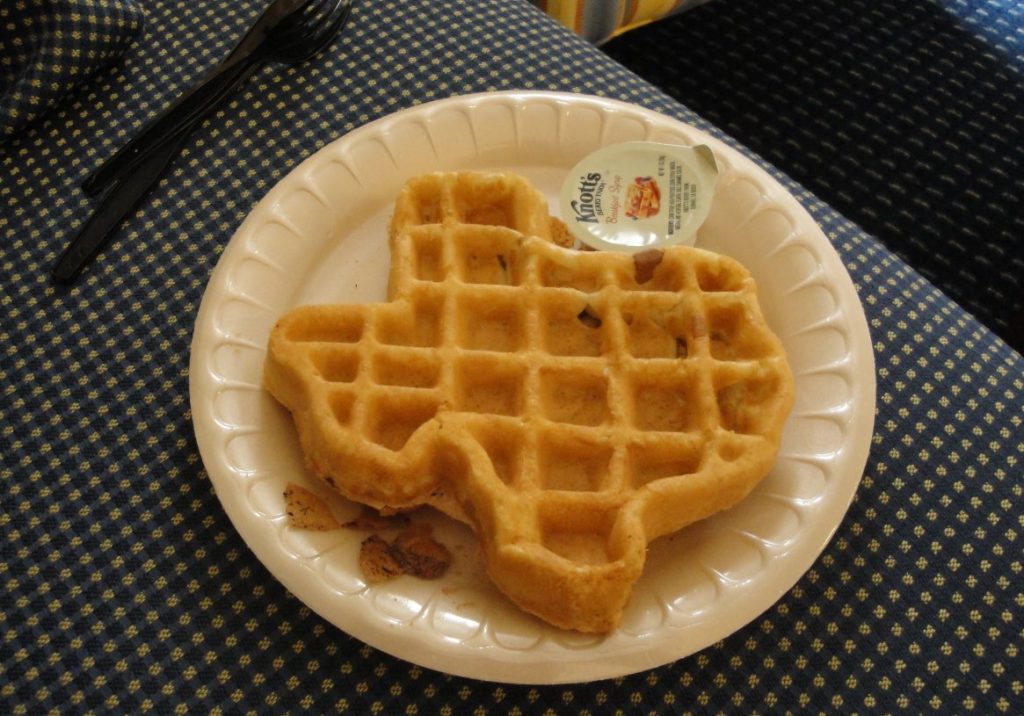
People have local pride, of course, and Texas has more local pride than any other place I went. From my hotel window I saw Texas flags on top of many buildings. There are lots of other signs of Texas pride. Even the waffle at our hotel was shaped like the State of Texas.

The top picture is the San Antonio River Walk. They put food coloring in to give it that green color. The next shows one of the many foot bridges over the river. The trees that are shaped like elm trees are actually Montezuma cypresses. There is an individual picture of one along side. Between that is a live oak. And at the bottom are the Texas waffle and flags. Below is the Buckhorn Saloon, full of stuffed animals of the kind PETA doesn’t approve. There are even more in the rooms above.
